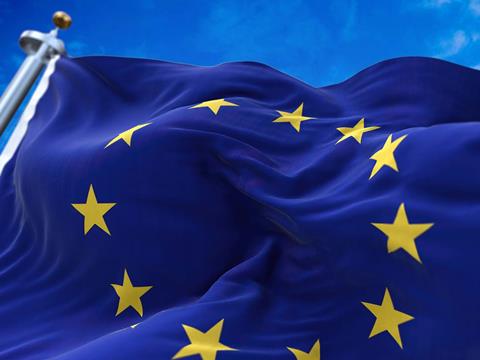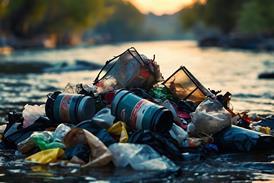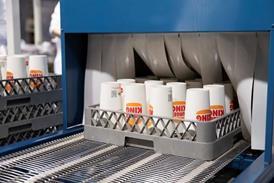
EUROPEN recently launched an interactive guidebook that aims to help businesses navigate the PPWR and make sense of its many requirements. Marzia Scopelliti, Senior Public Affairs Manager at EUROPEN, walks us through the key points.
I think it would be useful to start by getting your reflections on the entire (long) PPWR process from start to finish. Please could you also give us your thoughts on the final product?
The revision of the PPWR has been a highly complex process, reflecting the far-reaching implications of regulating something as universal as packaging. Nearly every product is packaged at some point in its lifecycle, which means the Regulation touches virtually every sector of the EU economy.
While many elements that are crucial for the PPWR implementation, such as core criteria, calculation rules and methodologies, remain to be defined in the future, the final PPWR strikes a balance between ambitious environmental goals and the practical realities of implementation within the packaging sector.
As such, the Regulation offers a strong framework that can drive full packaging circularity and foster innovation, especially if applied consistently across Member States and in full respect of the Single Market principles.
Moving forward, the extensive work required to develop and adopt numerous implementing and delegated acts necessitates massive efforts from regulators to enable a smooth and timely implementation of the text. EUROPEN stands ready to support, assisting regulators in any way necessary to achieve a successful implementation of the Regulation.
That brings us to EUROPEN’s new PPWR guidebook. Could you give us a brief overview of this resource? Why did EUROPEN decide to create it?
The PPWR Guidebook is designed as an open-access and practical tool to help businesses and stakeholders across the packaging value chain make sense of the Packaging and Packaging Waste Regulation (PPWR).
By breaking down the content of the legislation into a digestible and user-friendly questionnaire, organised around four main sections, the guidebook highlights key obligations and timelines, offering a comprehensive overview of how different provisions apply across the packaging value chain.
Given the complexity of the Regulation, it was clear that an easy-to-use tool would be essential to support businesses navigate the PPWR requirements, regardless of their familiarity with the Regulation and whether they are just starting to explore the Regulation or already adapting to the upcoming requirements.
From your point-of-view, what are the most important components of the PPWR, or the ones that you think will have the biggest impact on our industry?
In addition to obligations related to packaging waste prevention, the PPWR’s sustainability requirements are one of its most important components. These requirements, which all packaging will have to meet to maintain access to the EU market, are set to reshape how packaging is conceived, designed and labelled.
While all requirements under the PPWR are equally important, packaging recyclability stands out as its cornerstone. This is not only because recyclability by design and at large scale will apply to all packaging formats, including reusable ones, from 2030 and 2035 respectively. Packaging recyclability holds great potential to drive a systemic change in packaging waste management.
Starting from 2030, manufacturers will be obliged to design their packaging in line with future design for recycling (DfR) criteria. At the same time, waste management operators, Producer Responsibility Organisations (PROs) and Member States will also have to step up efforts to ensure the separate collection and recycling of packaging that is recyclable by design.
This underlines the fact that packaging waste management and the creation of an EU market for secondary raw materials must be a shared responsibility across the entire packaging value chain.
How does the questionnaire section of EUROPEN’s PPWR guidebook work?
The questionnaire is organised into four main parts and helps users identify which PPWR obligations or exemptions apply to their business. The first section is meant to identify the role of different users in the packaging value chain, such as importer, manufacturer, or distributor.
Users can then indicate the packaging materials that they work with and their intended purpose. The following and final section addresses potential exemptions or derogations a business may qualify for. The questionnaire also allows multiple choice, making it suitable for businesses that operate in more than one role or use multiple packaging materials.
At the end of the questionnaire, users can review and edit their profile before downloading a personalised report outlining key obligations, timelines and applicable derogations. A PDF version of the report is also available for download.
We’ve also created an explainer video to guide users through the process. In the coming weeks, versions with subtitles in different languages will be made available. To stay informed, follow our updates via our social media channels.
Please could you give us some insights into the legal terms section, and tell us about a couple of critical examples?
To complement the questionnaire, the PPWR Guidebook also includes a dedicated section that explores the key differences between the previous Packaging Directive and the new Regulation. It further examines how the PPWR interacts with other major pieces of EU legislation, such as the Single-Use Plastics Directive and the Ecodesign for Sustainable Products Regulation.
This section is intended to provide a high-level overview of potential overlaps, synergies, and areas of conflict, helping stakeholders better navigate the broader regulatory landscape.
The glossary of legal terms in the guidebook is also essential for understanding how specific definitions underpin regulatory obligations. To support users, essential definitions are also embedded directly within the questionnaire, allowing users to easily access relevant references and clarifications. This integrated approach ensures a more seamless and accessible experience for all users.
If you liked this story, you might also enjoy:
The ultimate guide to the Packaging and Packaging Waste Regulation in 2025
How are the top brands progressing on packaging sustainability?
Everything you need to know about global packaging sustainability regulation in 2025
The key to increasing the use of reusable packaging in supermarkets











No comments yet